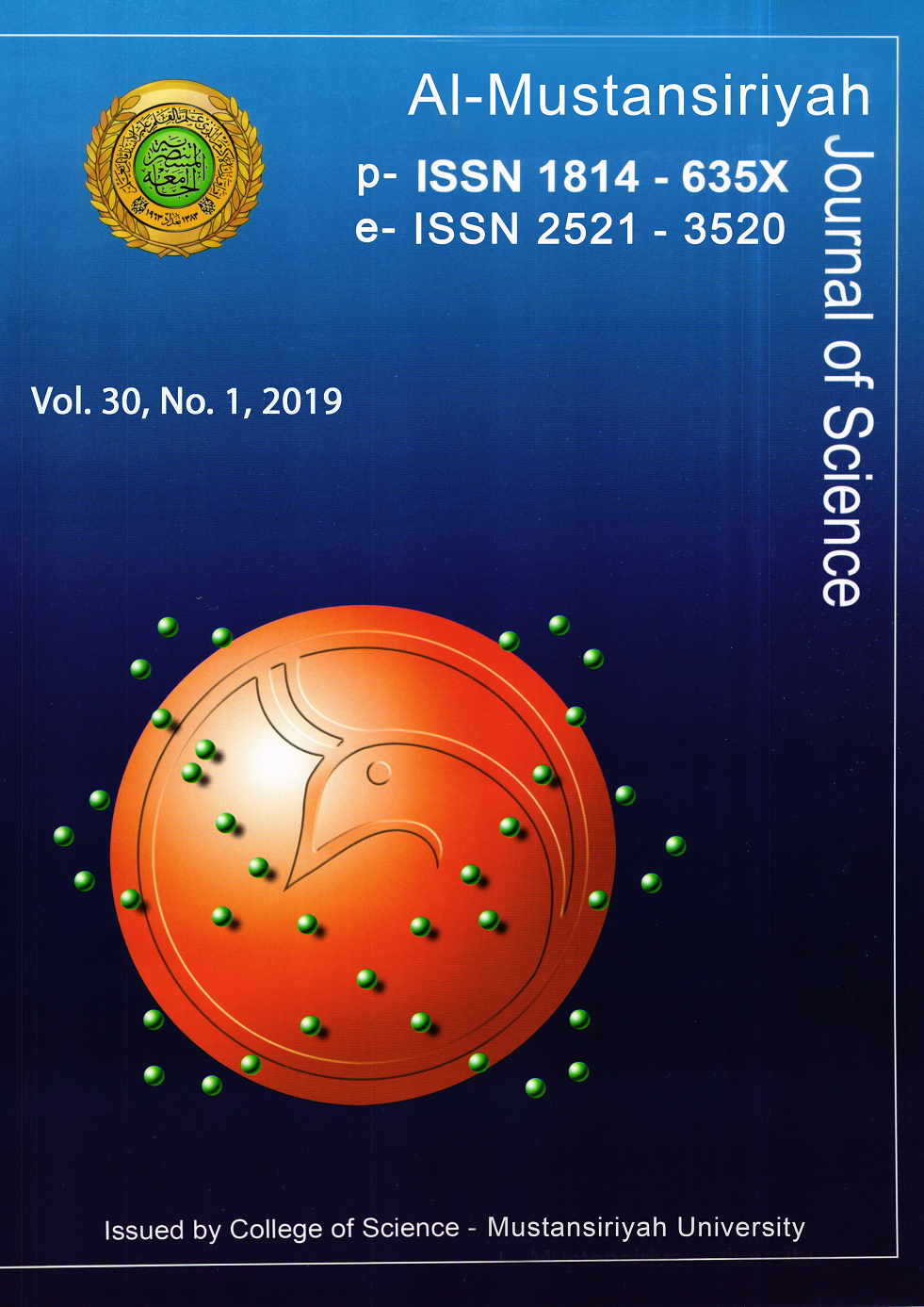Dynamical Analysis of Severe Rain Events over Iraq
DOI:
https://doi.org/10.23851/mjs.v30i1.586Keywords:
rainfall, meteorological elements, dynamical analysis, periodAbstract
Abstract Rain is one of the most important meteorological elements for the various forms of life. Over time, because of the changes in the Earth's climate, patterns of precipitation have changed. Many areas have suffered from lack of water resources. Others have become completely dry and turned into arid deserts. For these reasons, increased interest in climate studies, especially those related to rainfall. In this study, the statistical indicators was showed for the mean annual rainfall is about 225.84 mm and rainfall fluctuates around this mean, and the trend of rainfall was decreasing for period (1983-2017). The mean of monthly rainfall indicate that the highest amount is less than40 mm/month. The histograms of monthly rain shows the highest counts of(40-50) mm, (30-40) mm, (20-30) mm, ( 10-20)mm, (0-10)mm intervals for same period. By using TRMM daily rainfall maps to study the dynamical analysis of severe rainfall cases was conducted in Iraq for four individual study cases. The highest values are ranged between (80- 160) mm. Eleven meteorological elements were selected to study their behavior in the process of severe rainfall in these study cases as the (1000-500) mb thickness, mean sea level pressure, the 850 hPa (relative humidity, temperature and streamlines), the 500 hPa (vorticity and geopotential height), the 200 hPa (streamlines and isotaches), the Convective Available Potential Energy (CAPE) and the Total Cloud Water Vapor (TCWV) founding some of the results that were illustrated in this paper.Downloads
References
References
Strangeways I.C., (2007): Precipitation Theory, Measurement and
Distribution. Cambridge University Press, 302 p.
Levizzani, V., et al., (2007): Measuring Precipitation from Space.
Springer, 724 p.
Andronache, C., (2018): Remote Sensing of Clouds and Precipitation.
Springer, 282 p.
Bellerby, T., M., et al., (2000): Rainfall Estimation from a
Combination of TRMM Precipitation Radar and GOES Multispectral
Satellite Imagery through the Use of an Artificial Neural Network,
Journal of Applied Meteorology, vol. 39, pp. 2115-2128.
Ikai, J. and K. Nakamura, (2003): Comparison of Rain Rates over the
Ocean Derived from TRMM Microwave Imager and Precipitation
Radar, Journal of Atmospheric and Oceanic Technology, vol. 20, pp.
-1726, Dec
Gruber, A., et al., (2000): The Comparison of Two Merged Rain
Gauge-Satellite Precipitation Datasets, Bulletin of the American
Meteorological Society, vol. 81, no. 11, Nov.
Chen, F. W., (2004): Global estimation of precipitation using opaque
microwave bands. Ph. D. Thesis, MIT, USA.
Teo, C. K., (2006): Application of satellite-based rainfall estimates to
crop yield forecasting in Africa. Ph. D. Thesis, University of Reading,
UK.
Artan, G., et al., (2007): Adequacy of satellite derived rainfall data
for stream flow modeling. Nat. Hazard, 43, 167-185.
Jamil, L. T., and K. J. Al-Jumaily, (2015): Study and analysis of
convective rain in Iraq: Case studies. Mustansiriyah J. Sc., 26 (2),
-55, (in Arabic).
Abdulrida, M. A., and K. J. Al-Jumaily, (2016): Comparisons of
monthly rainfall data with satellite estimates of TRMM 3B42 over
Iraq. IJSR, 6(1), 494-499.
Al-Zuhairi, M. F., K. J. AL-Jumaily, and A. M. AL-Salihi, (2016):
Analysis of TRMM precipitation radar measurements over Iraq. IJSR,
(12), 1-9.
Al-Falahi, A.A., 2008: Middle East Water and Livelihoods Initiative.
ICARDA, Aleppo 7-9 July, 2008.
Gelaro, R., et al., 2017: The Modern-Era Retrospective Analysis for
Research and, Version 2 (MERRA-2). J. Climate, 30, 5419-5454.
www.ecmwf.int
Wang, Y.Q., Zhang, X.Y. and Draxler, R., (2009): TrajStat: GIS-
based software that uses various trajectory statistical analysis
methods to identify potential sources from long-term air pollution
measurement data. Environmental Modelling & Software, 24: 938-
Downloads
Key Dates
Published
Issue
Section
License
(Starting May 5, 2024) Authors retain copyright and grant the journal right of first publication with the work simultaneously licensed under a Creative Commons Attribution (CC-BY) 4.0 License that allows others to share the work with an acknowledgement of the work’s authorship and initial publication in this journal.






















